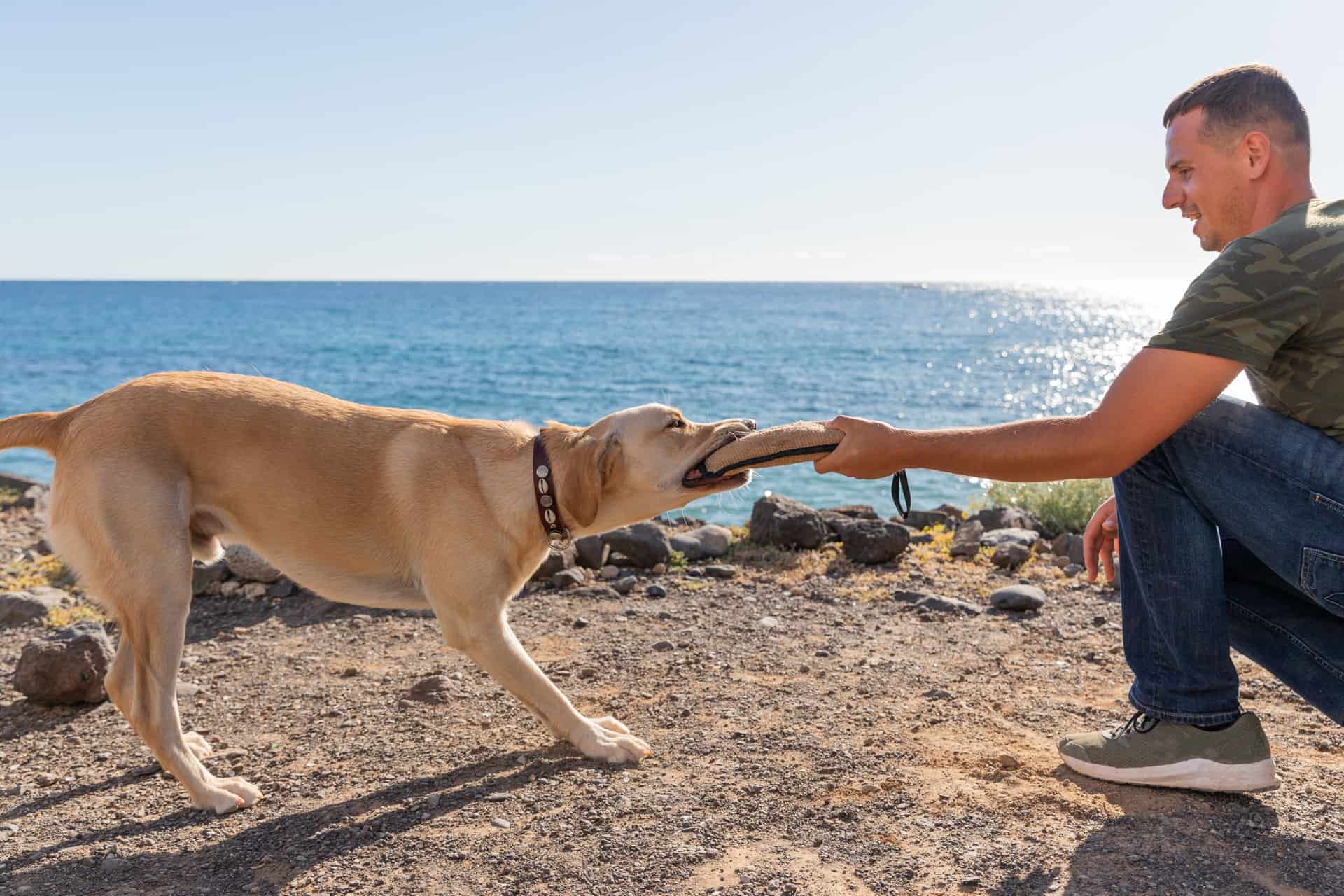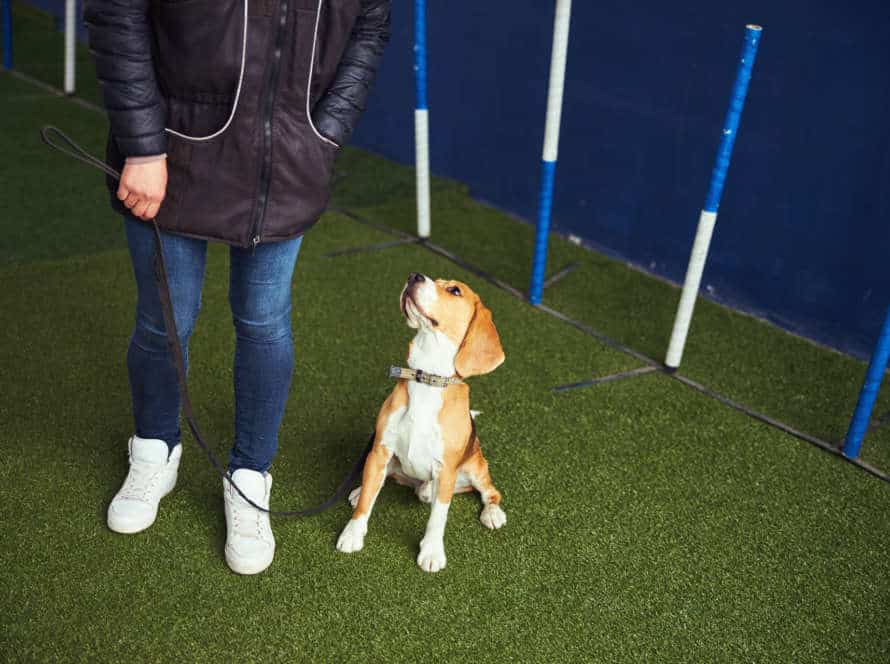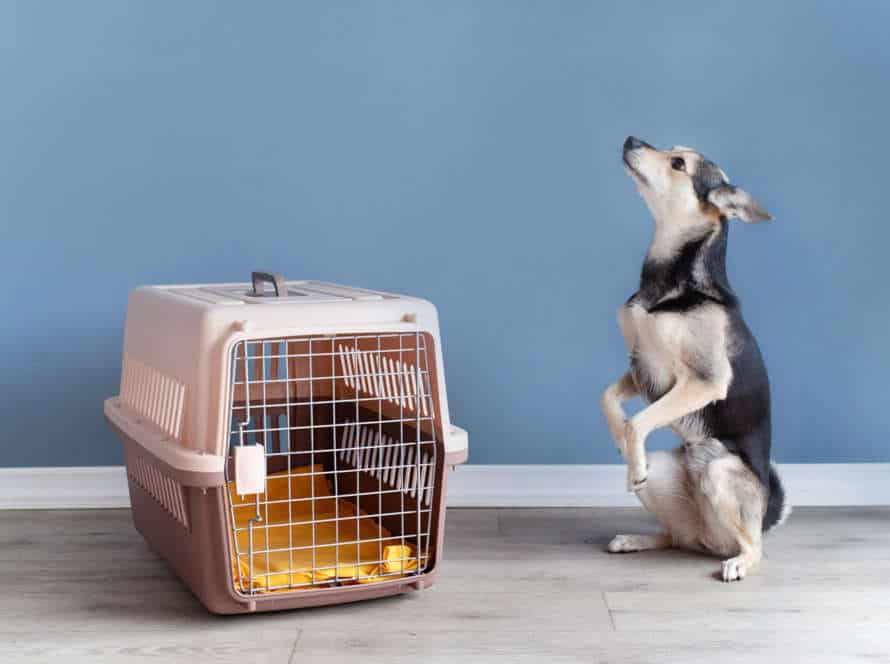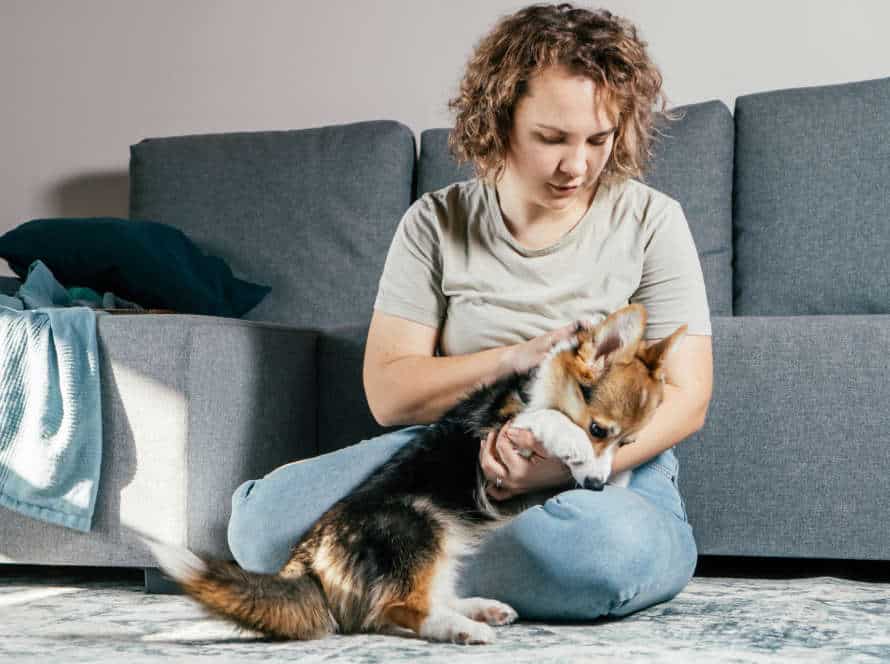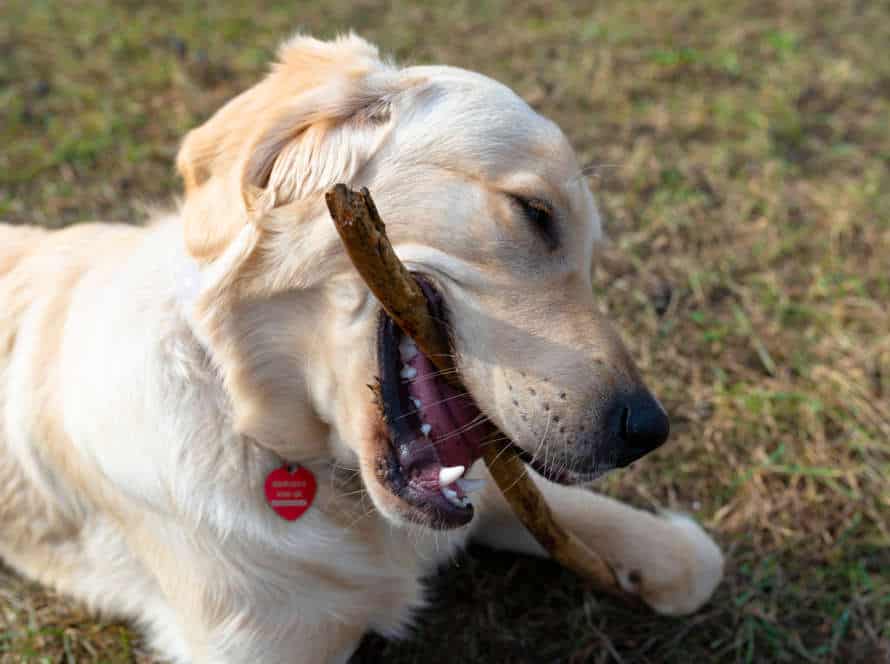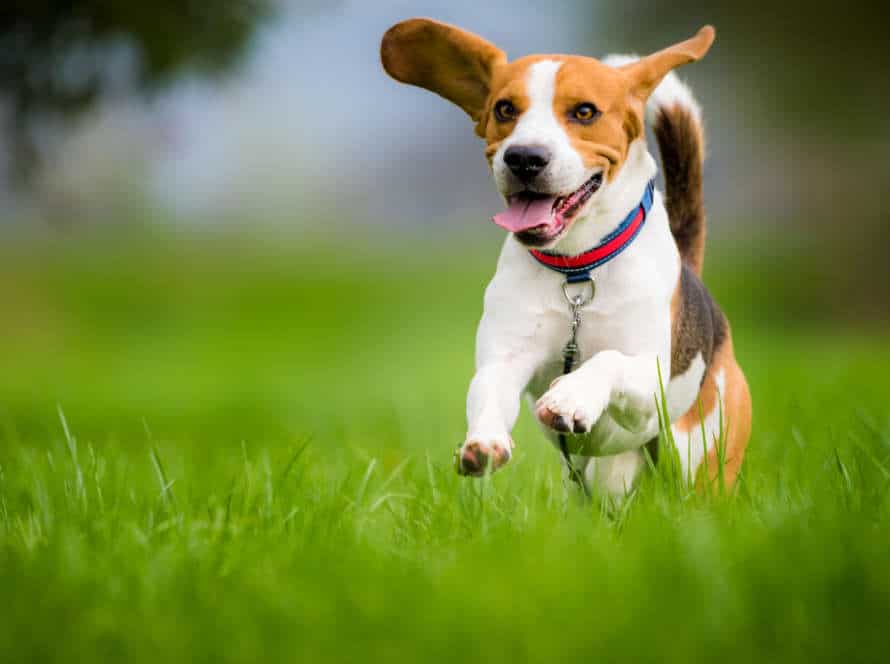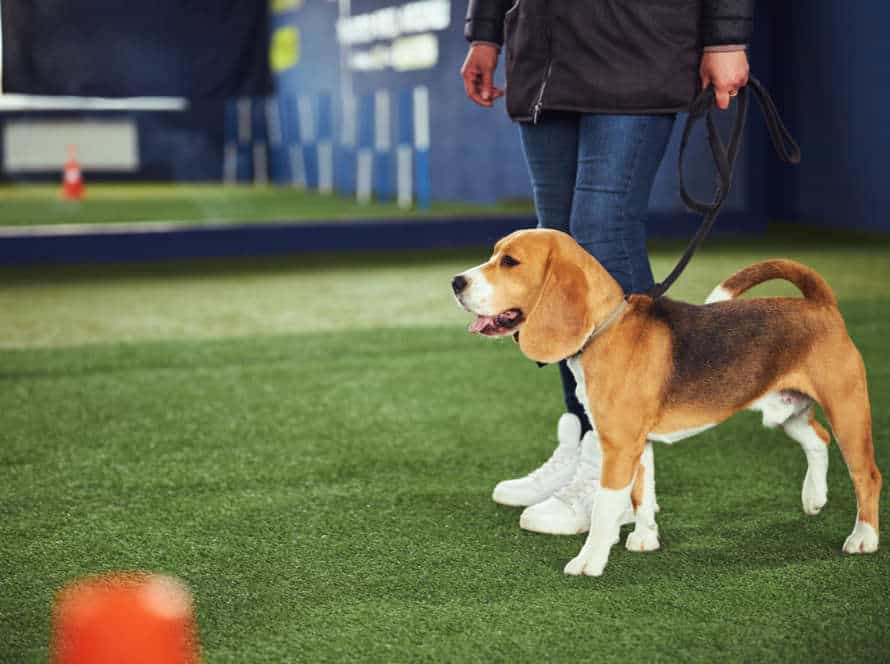How to Manage Biting Behavior in Adult Dogs: A Comprehensive Guide
Biting behavior in adult dogs can be a serious problem. Here is how to manage it:
- Identify why the dog is biting – fear, anxiety, territory or medical issue.
- Consult a professional – dog trainer or behaviorist – to create an action plan.
- Socialize your dog with people and pets. Expose your pup to new situations and people, to reduce fear and anxiety.
- Train your pup with rewards, praise and toys.
- NO physical punishment! Use a muzzle or leash in public until the behavior is controlled.
- Be patient and understand it takes time to modify behavior.
- Prioritize safety – do not risk yourself or others.
Pro Tip: Exercise and mental stimulation can help reduce biting behavior by releasing energy and anxiety.
Understanding the Reasons for Biting Behaviors
Grasping why your grown-up pooch is biting is the initial move towards controlling the conduct. Biting could be due to a few elements, such as dread, stress, area, and torment.
It is imperative to note the reason for the conduct so you can manage it in the best manner. In this guide, we will examine the potential reasons for grown-up canine biting and how to manage the circumstance.
Fear or anxiety-based biting
Fear or anxiety-based biting is a frequent behavior in dogs. When they feel threatened or uncomfortable, they bite as a way to protect themselves or communicate their feelings.
To manage this issue, it’s key to know the triggers. Desensitize the dog to them with positive reinforcement, counter-conditioning, and teach them other behaviors.
Provide a safe and secure environment. Exercise and mental stimulation can reduce their stress. Consider getting professional help.
Note that biting must not be ignored or dismissed. Patience, consistency, and the right techniques can help your dog overcome their fear or anxiety-based biting.
Pro tip: If you’re not sure how to manage your pup’s biting, contact a professional dog trainer or behaviorist.
Dominance-based biting
Dominance-based biting is a behavior in dogs, based on hierarchy and pack mentality. They may bite when they feel the need to show dominance over a person or another dog.
Reasons why dogs may do this include:
- Lack of socialization, which can lead to not learning proper canine etiquette.
- Fear and anxiety, as they may bite to protect themselves and their territory.
- Training using dominance-based methods, which can lead to using their mouths to show dominance.
It’s important to understand the reason for this behavior, and address it. Professional training and behavioral modification can help reduce or eliminate it.
Pro tip: Patience and positive reinforcement-based training are essential for teaching appropriate behavior and discouraging biting.
Protection-based biting
Protection-based biting is a normal thing in dogs. It happens when they think they or their owner is in danger. Here are some possible reasons why:
- Fear and anxiety – Dogs can bite if they’re scared of loud noises, strangers, changes or something else.
- Territorial behavior – Some dogs are wired to guard their house and people. So, they may bite if they think someone’s a threat.
- Lack of training – Without proper training and socialization, dogs can get overwhelmed and bite.
You can manage protection-based biting with the right training and socialization. Plus, try to spot and avoid things that trigger aggression.
Pro tip: Give your dog exercise, playtime and positive reinforcement training. That can help reduce their anxiety and make them behave better.
Identifying the Triggers for Your Dog’s Biting Behavior
Understand your pup’s biting behavior triggers! This is key to help them manage it. Identify the environment, people, and animals that trigger this. Additionally, figure out the emotions & body language linked to biting. Learn to manage those too. In this guide we’ll discuss this. We’ll go through how to identify these triggers and how to manage your pup’s biting behaviour.
Tracking biting behavior incidents
Tracking your pup’s biting habits is key to managing it. Keeping a record helps understand what sets off the biting, and how to prevent it in the future.
Use a notebook or digital doc to store info each time your dog bites:
- Date and time
- Where it happened
- What caused it (food aggression, fear etc.)
- How severe (scratch, puncture etc.)
- Victim and witness behavior
Review your notes regularly to spot patterns. This can help come up with a plan to manage it, like training or medical help. Consult a pro for best advice.
Identifying patterns or triggers
To manage and prevent your dog’s biting behavior, try to spot patterns or triggers. Triggers could be environmental or physical/emotional.
Here are some tips to help:
- Watch your dog before/after biting occurs.
- Note noise, change of surroundings, or unfamiliar visitors.
- Check if your pup is in pain, ill, or anxious.
- Log any previous biting incidents.
Once triggers or patterns are identified, avoid them and give your pup a safe and relaxed atmosphere.
Pro Tip: Reach out to a veterinary behaviorist if the biting is severe or frequent.
Understanding body language and warning signs
Dogs use body language to tell their owners how they’re feeling. It’s important to recognize these signals. Here are some to look out for:
- Growling: A deep rumble or growl can mean they’re feeling aggressive.
- Stiff body posture: Rigid body with weight shifted forward means they’re feeling threatened.
- Showing teeth: Teeth on display is a sign of unease.
- Tail tucking: Tail between legs shows fear.
- Ears back: Ears pulled back or flat against head is submission or fear.
By understanding these signs, you can prevent biting behavior in adult dogs.
Pro Tip: When approaching a dog, do it slowly and don’t look them in the eye!
Implementing Management Techniques
Proper management techniques can be used to tackle biting behavior in adult dogs. Implementing these strategies allow owners to help their dogs to manage their behavior better and create a safe space for them to learn and develop. In this guide, we will cover various management techniques like:
- Boundary training
- Environmental management
- Desensitization
Safe handling techniques
When dealing with adult dogs who bite, using safe handling techniques is vital to all involved. Here’s how:
- Put on protective gear like gloves and long-sleeved shirts when handling a dog known for biting.
- Approach cautiously, speaking in a calm, low voice.
- No punishing or yelling – this can make aggression worse.
- Reward good behavior with treats and kind words.
- Get professional guidance to find the best strategies for managing biting.
By following safe handling and applying effective strategies, biting in adult dogs can be lessened in time.
Physical management tools
Using physical management tools can help manage biting in adult dogs. But, they should only be part of a bigger plan. Here are examples:
- Muzzles: Fit a muzzle to stop biting and still let them pant, drink and eat. Use them in short periods, supervised.
- Leashes: Keep a dog leashed when around people or other animals. A short leash helps control them.
- Crates & Gates: Put a dog in a crate or area to stop them from reaching objects that cause biting.
It’s important to get help from a vet or a qualified dog trainer. Make a custom plan to address the cause of biting. Pro tip: Positive reinforcement, like rewarding good behaviour, works with physical management tools to create long-term change.
Environmental modifications
Modifying the environment is a great way to manage biting in adult dogs. Here are some tips:
- If your pup gets aggressive around certain folks, animals, or things, keep them away from each other.
- Keep your dog in certain areas at home by using gates and crates.
- To make the atmosphere calmer, use pheromone diffusers or white noise machines.
- Exercise and mental stimulation will stop your pup from getting bored and anxious.
These changes can help manage the biting and create a safe and comfy space for you and your furry pal.
Training for Biting Behaviors
Biting in adult dogs can be risky. So, it is important to get started with training right away. To manage biting behaviors effectively, figure out why the dog is biting. Set boundaries, offer positive reinforcement, and be consistent. Redirect their energy when necessary. This guide offers a thorough overview for managing biting behavior in adult dogs.
Positive reinforcement training
Positive reinforcement training is a powerful way to manage biting in adult dogs. Instead of punishments or physical force, reward desirable behaviour and ignore or redirect undesirable behaviour. Here’s the steps:
- Identify triggers for your dog’s biting.
- Teach an alternate behaviour, such as “sit” or “down“.
- Reward your dog when they exhibit desired behaviours.
- Don’t punish them for biting, it could make it worse.
- Redirect your dog’s attention to an appropriate toy or activity when you see signs of potential biting.
- Be patient and consistent, and get professional help if needed. Most importantly, managing biting behaviour in adult dogs needs time, dedication and commitment to positive reinforcement techniques.
Redirection techniques
Redirection techniques can help manage biting in adult dogs. Offer a chew toy when your pup starts to bite – teaching that biting is only ok on the toy. Positive reinforcement is another technique – give treats or playtime when pup shows restraint. For extreme cases, a pro dog trainer or behaviorist needs to be consulted for a tailored plan. Redirection & positive reinforcement helps your pup learn the right behavior & manage biting!
Desensitization and counter-conditioning
Desensitization and counter-conditioning are key for keeping biting behavior in check in adult dogs.
Desensitization is about introducing your pup to the stimulus that causes them to bite, but slowly, beginning with a level that they are ok with.
Counter-conditioning is about replacing the negative emotion your dog has with a positive one. This can be done by making the stimulus enjoyable by giving treats or playing!
By using both of these techniques together, you can help your pup overcome biting behavior and even learn new behaviors in response to the stimuli. If your dog’s biting is extreme or if you don’t have experience with this, ask for help from a professional trainer or behaviorist.
Seeking Professional Help
Struggling to manage your adult pup’s biting? Maybe it’s time to get help from a pro! A trained expert can give you the resources and tips you need to tackle the problem. They’ll assess the situation, figure out the cause of the biting, and make a plan just for your pup.
Consulting with a veterinarian or veterinary behaviorist
If you’re having trouble with your adult dog’s biting, talking to a vet or a vet behaviorist is a must. Here’s why:
- They can figure out if there’s a medical cause, like pain or a neurological issue, and give the right treatment.
- A full behavior evaluation will happen, and a personalized plan will be made based on your dog’s needs and personality.
- They can show you how to stop the biting, like managing their environment, and socializing and training them better.
Getting professional help is crucial for addressing biting in adult dogs. This way, both you and your pup will have a safe and happy home!
Finding a qualified dog trainer
It’s essential to locate a skilled dog trainer when managing biting behavior in adult dogs. Here are some tips to aid you in finding the perfect trainer for you and your pup:
- Check if the trainer has credentials from organizations like the Certification Council for Professional Dog Trainers or the International Association of Animal Behavior Consultants.
- Get advice from your vet, family, or friends who have obedient dogs.
- Have a meeting with the trainer to chat about their skills, training methods, and how they plan to tackle your dog’s biting behavior.
- Pick a trainer who uses positive reinforcement techniques and has experience with dogs that have similar behavior problems.
- Recall that it may take some effort to find the right trainer, but it’s worth it to guarantee the safety and well-being of your dog and others.
Considering the use of medication for anxiety-based biting
Anxiety-based biting in dogs can be a critical matter, needing professional aid. If your pup displays biting conduct due to anxiety, medication may be an alternative to ponder in combination with behavior alteration practices. Here are a few points to keep in mind when evaluating the use of medication:
- Consult a vet to decide the correct medication for your dog’s precise anxiety and biting behavior.
- Medication should be coupled with behavior change techniques, such as desensitization and counterconditioning.
- Monitor your pup for any side effects and report any transformations to your veterinarian straight away.
- Medication may give short-term consolation yet should not be depended on as a long-term answer.
Pro Tip: Safety is always foremost when tackling anxious and biting dogs. Getting aid from an expert trainer or behaviorist can significantly lessen the danger of injury and guarantee long-term achievement in managing the conduct.
Frequently Asked Questions
1. What causes biting behavior in adult dogs?
There can be several reasons why dogs bite, which include fear, anxiety, pain, territorial aggression, and social aggression.
2. How can I prevent my adult dog from biting?
You can prevent biting by socializing your dog at an early age, teaching bite inhibition, keeping your dog leashed in public, supervising interactions with children, and seeking professional training for aggressive behavior.
3. How can I stop my adult dog from biting me?
If your dog bites you, you can stop the behavior through positive reinforcement training, redirecting their attention, using a deterrent, figuring out the trigger and removing it, or visiting a veterinarian to determine if there is an underlying medical condition.
4. How can I manage biting behavior during playtime?
When playing with your dog, always use toys instead of hands or feet, keep playtime short, and end it if your dog gets too excited or aggressive. You can also teach your dog the “drop it” command to prevent them from biting and holding on to objects.
5. Can biting behavior in adult dogs be cured?
While it can be challenging to cure aggressive behavior in adult dogs, it is possible with proper training and behavior modification techniques. However, it requires patience, consistency, and the guidance of a professional trainer or behaviorist.
6. Should I punish my adult dog for biting?
No, punishment can make your dog more aggressive and fearful. Instead, focus on reinforcing positive behavior, rewarding good behavior, and redirecting negative behavior.

